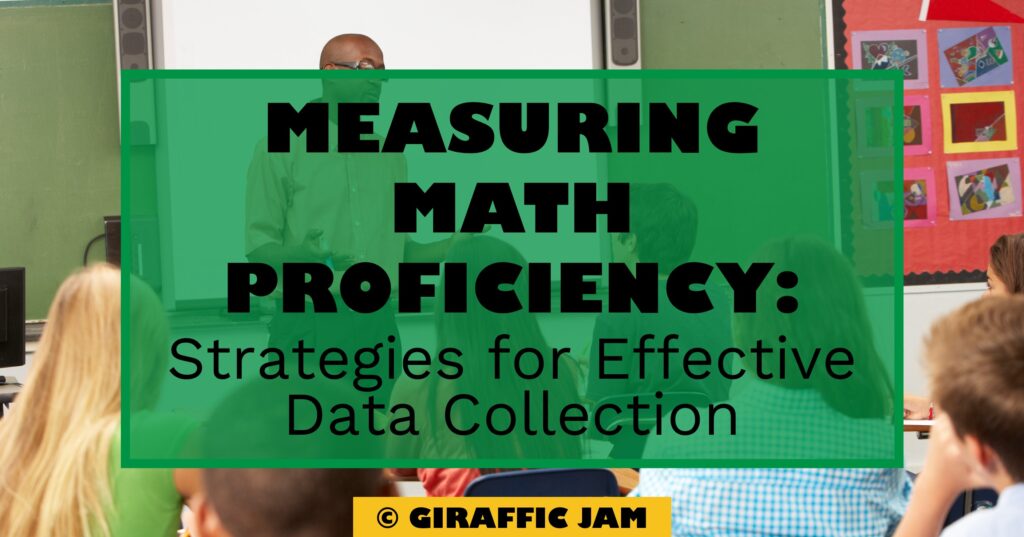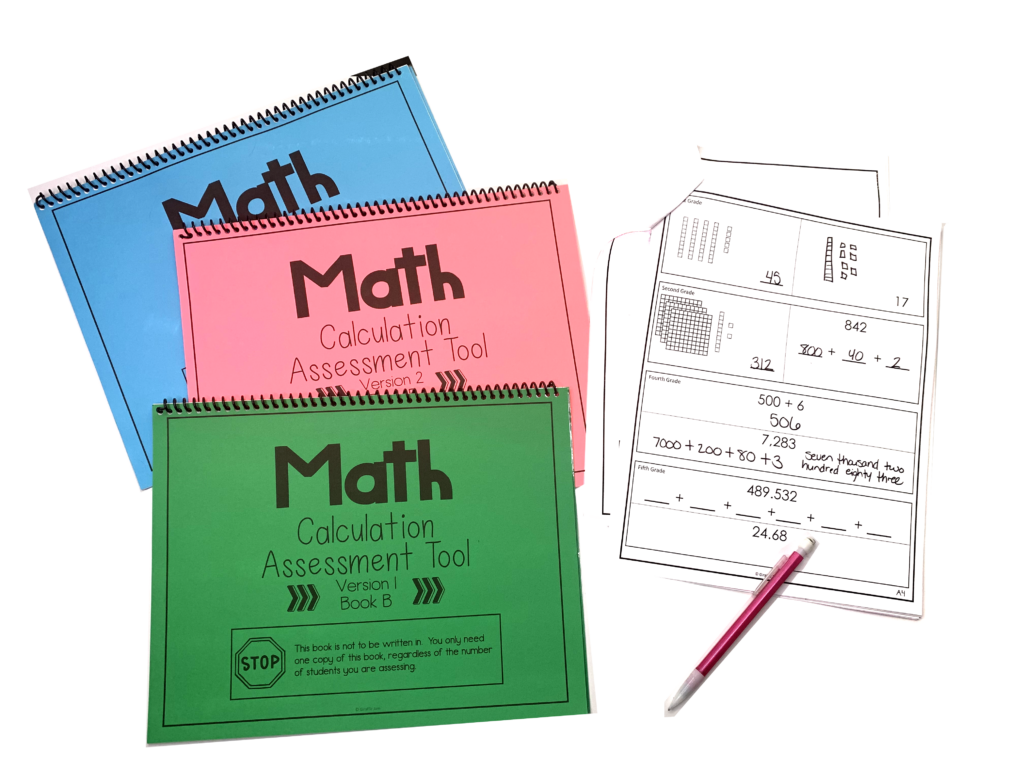
Math data collection is an essential part of teaching and learning in elementary schools. It provides valuable insights that educators can leverage to tailor their instruction to students’ specific needs. This blog post will explore various strategies for collecting math data in elementary school.
The first step in a comprehensive math data collection involves establishing a baseline. This is a process that is typically done at the beginning of a school year or a new unit of study.
I use these baseline assessments as my math tool for collecting baseline data. These assessments cover a variety of skills and progress from simple tasks (like counting) to more complex tasks (like word problems). It’s a super fast and easy way to see how students are doing on each particular math skill. From here, I can take the data and use it to guide instruction – I can group students based on their need and determine which math skills need the most instruction.

“This was a great resource that helped me gauge my students’ level of understanding in many different areas of math. I gave the assessment at the beginning of the year, and it helped inform my groupings. I could target specific skills faster, knowing their levels based on this assessment.”
-Christina C.
Baseline data provides a ‘snapshot’ of the student’s current abilities before any new instruction begins. These initial assessments can take many forms, such as quizzes, questionnaires, or observational notes. They can include basic arithmetic, problem-solving, or spatial skills, depending on the students’ grade level.
Using this data, teachers can identify what students already know and where there may be gaps in their understanding. Moreover, this provides a ‘before’ picture, enabling comparison as instruction progresses to assess improvement.
Collecting data during instruction is crucial for providing ongoing feedback to students and adjusting instruction as needed. There are numerous ways to collect data during instruction, such as:
The end of a time period, like a unit, semester, or school year, is an opportune time to collect math data. This is often accomplished through summative assessments, like unit tests or comprehensive exams.
This kind of data collection measures students’ understanding after instruction and gives an ‘after’ picture to compare to the baseline data. It allows teachers to assess the effectiveness of their teaching strategies and make adjustments for future instruction.
It’s also crucial to involve students in this phase. Having students self-assess their understanding or grade their performance based on established rubrics can promote self-regulation and metacognition.
Standardized assessments are an additional data collection tool in the elementary math classroom. These assessments are consistent in terms of the content tested and the conditions under which the test is administered.
Standardized tests provide data that is comparable across classrooms, schools, or districts. This data can identify trends, guide curriculum decisions, and help administrators allocate resources effectively. It’s important to note, however, that standardized test data is just one piece of the puzzle and should be used in conjunction with other data collection strategies to provide a more holistic view of student learning.
One of the ultimate goals of math data collection is to measure proficiency. This refers to the level at which a student is able to demonstrate understanding and application of the mathematical concepts taught.
Performance-based assessments, where students demonstrate their skills in a real-world context, are a great tool for this. For example, if students have been learning about fractions, a performance-based assessment could involve baking, where students need to accurately measure and mix ingredients.
Math journals can also serve this purpose. Here, students can write about their mathematical thinking, providing insight into their understanding. Furthermore, standardized assessments and end-of-unit tests can provide additional data on proficiency levels.
Collective math data in elementary school provides a road map for instruction. It helps teachers understand where students are starting from, how they are progressing, and where they may need additional support. Through effective data collection, teachers can enhance their instruction, students can improve their understanding, and together, they can celebrate the growth and achievements made in the math classroom.